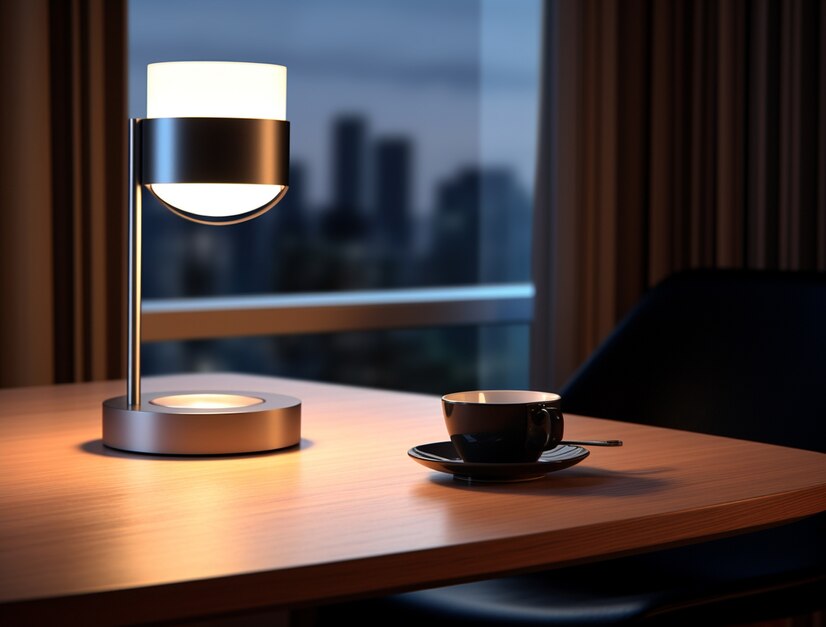In the realm of interior design and workspace aesthetics, lighting plays a pivotal role in setting the ambiance and enhancing productivity. Among the myriad of lighting fixtures available, the desk lamp stands out as both a functional necessity and a stylish accessory. However, the desk lamp has undergone a remarkable transformation over the years, evolving from simple illuminators to sophisticated, technologically advanced pieces that cater to the modern lifestyle. In this article, we delve into the world of modern desk lamps, exploring their design features, technological advancements, and the impact they have on contemporary workspaces.
A Brief History of Desk Lamps
The Early Beginnings: Tracing back to the late 19th century, desk lamps were predominantly utilitarian in design, often featuring a simple, adjustable arm and a basic light source such as an incandescent bulb. These lamps served the primary purpose of providing focused illumination for tasks such as reading and writing.
Mid-Century Modern Influence: The mid-20th century witnessed a surge in desk lamp designs influenced by the modernist movement. Sleek lines, minimalist forms, and the use of materials like chrome and aluminum became prominent features during this period, reflecting the era’s emphasis on functionality and aesthetics.
Technological Advancements: The latter part of the 20th century saw significant technological advancements impacting desk lamp design. The introduction of halogen bulbs and later, compact fluorescent lamps (CFLs) and LEDs, revolutionized energy efficiency and durability, paving the way for more sustainable lighting solutions.
Design Features of Modern Desk Lamps
Sleek and Minimalist Aesthetics: Modern desk lamps often embrace clean lines and minimalist aesthetics, seamlessly integrating into contemporary workspaces without overwhelming the visual environment. Designs may feature slim profiles, geometric shapes, and monochromatic finishes, exuding a sense of sophistication and elegance.
Adjustability and Flexibility: Versatility is a hallmark of modern desk lamps, with many models offering adjustable arms, swivel heads, and multiple brightness settings. These features empower users to customize the lighting according to their specific needs, whether it’s precise task lighting or ambient illumination for a more relaxed atmosphere.
Integrated Technology: The integration of technology has become increasingly prevalent in modern desk lamps, catering to the digital demands of the modern workforce. USB charging ports, wireless charging pads, and even built-in speakers or Bluetooth connectivity are common features found in contemporary designs, transforming the desk lamp into a multifunctional workstation accessory.
Technological Advancements in Modern Desk Lamps
LED Lighting: Light-emitting diode (LED) technology has revolutionized the landscape of desk lamps, offering unparalleled energy efficiency, longevity, and versatility. LED desk lamps consume significantly less energy compared to traditional incandescent or fluorescent bulbs, while providing superior brightness and color rendering.
Smart Features: The emergence of smart desk lamps has ushered in a new era of convenience and connectivity. Smart lamps equipped with sensors and programmable controls allow users to adjust lighting settings remotely via smartphone apps or voice commands, optimizing comfort and productivity.
Color Temperature Control: Many modern desk lamps offer adjustable color temperature settings, allowing users to switch between warm, cool, or neutral hues to suit different tasks and moods. This feature, known as “color tuning,” enables users to create optimal lighting conditions for tasks such as reading, writing, or computer work.
Impact on Workspace Ergonomics and Productivity
Ergonomic Considerations: Proper lighting is essential for maintaining healthy workspace ergonomics and reducing eye strain and fatigue. Modern desk lamps with adjustable arms and glare-reducing features enable users to position the light source effectively, minimizing shadows and reflections that can cause discomfort during prolonged periods of work.
Enhanced Productivity: The right lighting can have a significant impact on productivity and concentration levels in the workplace. Studies have shown that well-lit environments contribute to improved cognitive performance and mood, leading to greater efficiency and creativity among employees.
Sustainability and Environmental Considerations
Energy Efficiency: With growing awareness of environmental sustainability, modern desk lamps are designed with energy efficiency in mind. LED desk lamps consume a fraction of the energy compared to traditional lighting sources, resulting in lower electricity bills and reduced carbon emissions.
Longevity and Durability: The longevity and durability of LED desk lamps further contribute to their eco-friendliness, as they require less frequent replacement and disposal compared to conventional bulbs. Additionally, many manufacturers prioritize the use of recyclable materials and employ eco-friendly production practices, aligning with the principles of sustainable design.
Conclusion
Modern desk lamps represent a harmonious blend of form, function, and technological innovation. From their humble beginnings as utilitarian fixtures to their current status as integral components of contemporary workspaces, desk lamps have evolved to meet the evolving needs of users in the digital age. With sleek designs, advanced features, and a focus on sustainability, modern desk lamps not only illuminate our workstations but also enhance our productivity, well-being, and environmental stewardship. As we continue to embrace innovation and design excellence, the future of desk lamps holds promise for even greater advancements in lighting technology and ergonomic design.







